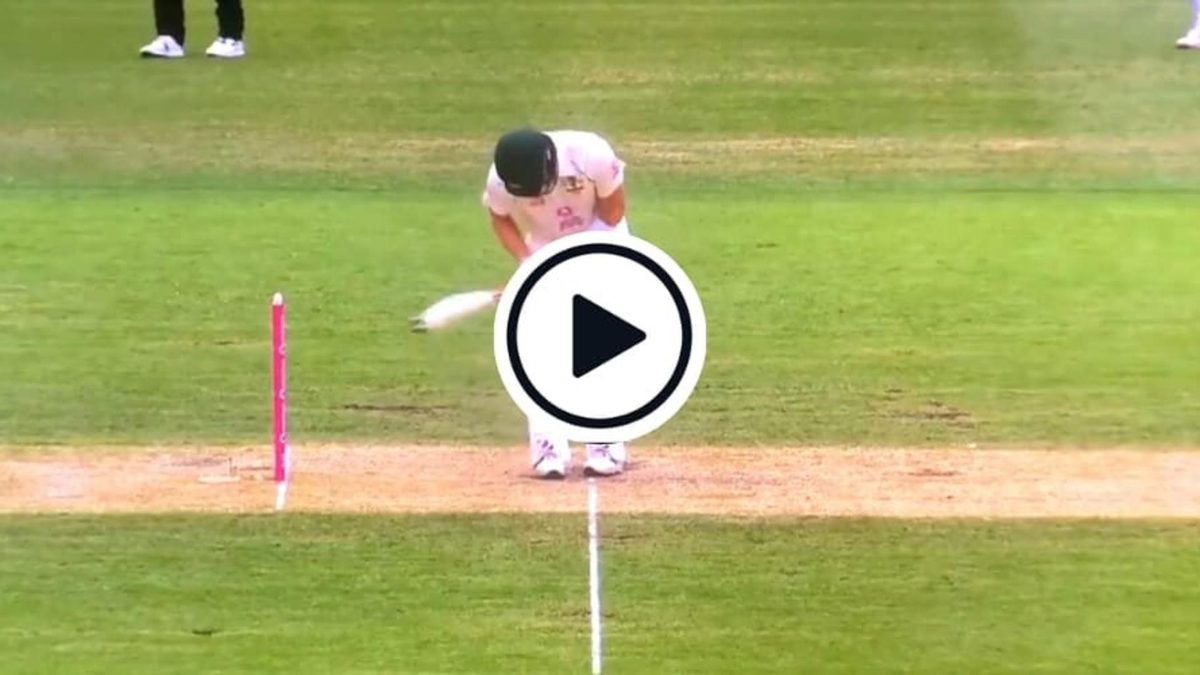
Steve Smith has adopted a slightly different stance in the Sydney Test to help him come out of a rough patch of form.
The day before the Sydney Test, the Australia batsman was seen shadow practicing in his kit in a hotel room, sparking several discussions on social media about an impending Smith special.
While another epic might well be in the making at the SCG, the discussions around Smith have revolved less around him being back to his best and more around his unusual batting stance at the crease.
GOAT mode engaged!
Steve Smith spent the night before the third Test shadow batting in his hotel room (🎥: dani_willis, IG)
Day 1 live blog: https://t.co/tunxYOunNN pic.twitter.com/rEhA2Cqb7r
— News Cricket (@NewsCorpCricket) January 6, 2021
Mike Hussey and Mark Waugh in the commentary box spotted that Smith was using a slightly different batting stance for this Test. He had closed himself up with his left foot locked inwards before opening up just before the ball was delivered.
“Look at that front foot how it’s pointing towards gully almost. Definitely a bit of a change,” Hussey said. “He’s got some of the weirdest theories I’ve come across; who knows where he comes up with this stuff? I think batting is a lot about feel, sometimes it just feels right and he obviously tinkers a lot. He does open it back up before the bowler bowls, so I don’t know.”
There were several similar reactions to Smith’s new stance on social media.
Thoughts on Smudge’s closer stance and inverted left foot⁉️
📺 Watch Day 2 #AUSvIND on Fox Cricket or Kayo: https://t.co/TOKD80enz8
📝Live blog: https://t.co/6xVX1aWInV
📱Match Centre: https://t.co/pv4UyqqI56 pic.twitter.com/y4AhoCNbJP
— Fox Cricket (@FoxCricket) January 7, 2021
Steve smith watch – pigeon toes during the fidgety/bat-tapping stage, laces taped round the back so not visible, toes relaxed as bowler releases. pic.twitter.com/nwnyPEwcPO
— simon hughes (@theanalyst) January 7, 2021
One thing I noticed today is(maybe very late) that how Smudge stands while the bowler runs up. The feet together, bending from the waist which would seriously restrict the batsman’s reach towards the ball. But Steve Smith is different. He is the player which does not depend on…
— इंदौर की Monkey बात🐒 (@monkeybaat_83) January 7, 2021
However, there is an explanation to this on Smith’s Instagram page, where back in May he talked about his pigeon-toe stance, which he uses when looking to bring power into his game.
View this post on Instagram
In the video, Smith talks about adopting a side-on stance where he locks himself up by closing his front foot. He says that it ensures he doesn’t open himself up easily by accident when playing the ball.
“It’s about being a bit more powerful and trying to clear the rope. Your bottom hand comes into play a lot more,” he said. “First of all, I want to stay side on for as long as possible. We want to try and keep this foot locked in for as long as possible. What that does is it just keeps your hips locked in. I can’t really move around and get front on. Whereas like this, my hips come round, so if I’m trying to hit the ball a long way like this, I’m losing a lot of power.
“The things I try and implement into my game from side on, I close my front foot off a little bit because it naturally wants to open up, and my hips as well, they want to open up, so if I look my foot in a little bit, it’s just got further to move to get round to open up, so hopefully helping me stay side on. The other thing I do, I’ll move my foot round and lock myself off so the same thing applies. It just helps me not go as far round when I’m really trying to muscle the ball, keeping me side on.
“You think of other sports where guys are trying to smack the ball as far as possible like golf or baseball. You see golfers, they are side on as long as they can. They keep their hips locked in and then they get a full swing of the bat. Baseball, the same, you see them staying side on, keeping their hips locked as long as they can, and letting their bat go as far as possible.”
Before this game, Smith’s Test form had been in stark contrast to his limited-overs exploits. He had scored just 10 runs in the series up until this point, but began the tour with a pair of 62-ball ODI hundreds, and this changed stance could perhaps be an attempt to bring some of that white-ball prowess into his red-ball game.
Smith is known to do weird things with his technique to get himself going. Against England in the Ashes in 2019, he decided to bat with his feet spread out when on 199 and facing Stuart Broad to easily flick through mid-wicket and get to his double hundred.
Steve Smith is on 199* in an Ashes test facing Stuart Broad and that’s the stance he takes before flicking it on the leg side whilst exposing all three stumps.
What a weirdly wonderful player man pic.twitter.com/z1zERLhNb5
— Parth Athale (@ParthAthale) December 31, 2020
The inverted stance in this Test against India has worked like a charm for Smith with the Australia middle-order batsman completing a half-century early on day two of the third Test in Sydney.








